I’ll never forget my first glimpse of Sitka from the airplane window: towering mountains and the silhouettes of a dozen wooded islands in the fog. At first, I wasn’t sure if the shadows I saw were real or imagined, and the trollers on the water looked so small they could have been toy boats.
I pressed my hands against the glass and watched in awe as the landscape took shape.
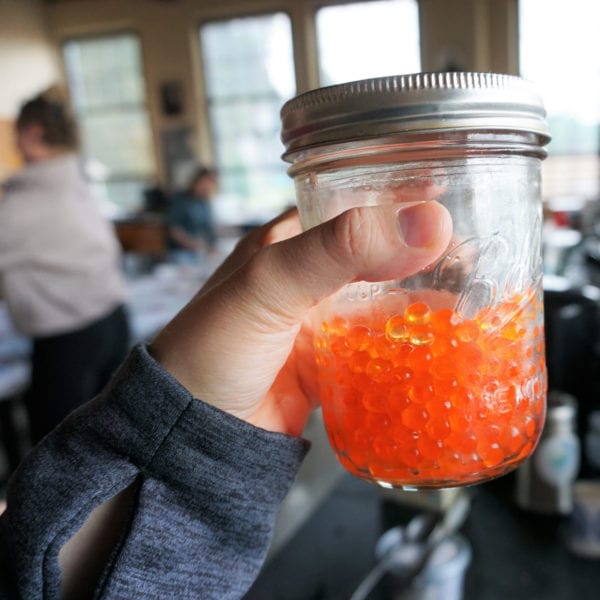
Admiring a fresh batch of salmon roe
Even before I arrived in Sitka, I knew it was a special place. I’d spent so much time reading about Sitka through the Visit Sitka website, exploring downtown on Google Street View, and watching videos posted by people who had visited. But nothing could prepare me for the excitement of seeing this southeast Alaskan town for the first time.
My days in Sitka have been full of magic and wonder, like watching a pair of flour-dusted hands make fresh bread or picking ripe huckleberries on a late morning hike. My first week here, I learned the difference between butter clams, cockles, and littlenecks based on the ribbing and patterns of each muddy shell I picked up.
One night, I even kayaked under the northern lights, in bioluminescent waters so bright I felt like the world had been inverted, and I was paddling through stars.
Maybe you’re reading this because you’ve always dreamt of visiting Alaska, or maybe you’re looking to move somewhere new. You might be wondering “why Sitka”, and it’s simple: these moments of everyday magic are part of what makes Sitka so special. But they’re not the only thing.
Sitka stands out from other places I’ve lived in or visited, and here’s why:
-
The Intersection of Tlingit, Russian, and American Cultures
In Sitka, you’ll find the overlap and coexistence of many different cultures and cultural influences. Sitka is, first and foremost, Lingít Aaní: Tlingit land. The Tlingit people have lived here continuously for over 10,000 years, and long before it was called Sitka or Novo Arkhangelsk, it was Sheetʼká. There are many opportunities to learn about Tlingit history and culture here, from watching the Naa Kahidi Dancers perform in a traditional Tlingit Clan House to walking through Sitka National Historic Park.
After the Battle of Sitka in 1804, the Russians took control of the area, renamed it to Novo Arkhangelsk (New Archangel), and designated it as the capital of Russian America. Although Russia sold Alaska to the U.S. in 1867, you can still find Russian influence in town by visiting places like the Russian Bishop’s House or St. Michael’s Cathedral, the first Orthodox cathedral in the New World.
These cultures and histories collide in complicated ways, such as during Alaska Day, where locals both celebrate the transfer of Alaska to the U.S. and process the complex, often painful, emotions that have come with it.
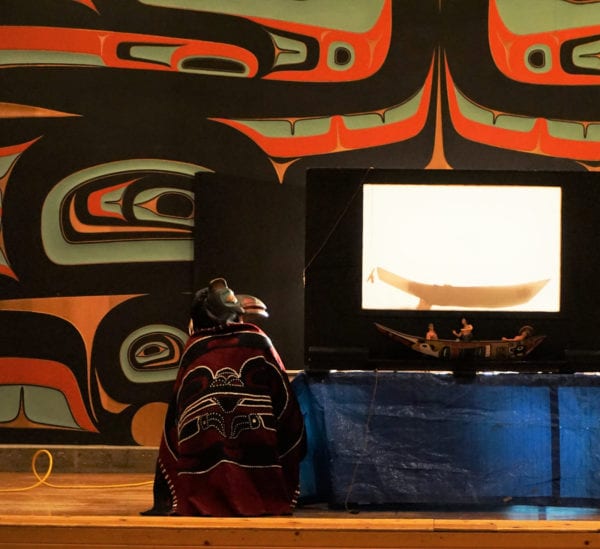
A Tlingit performer in regalia during a shadow puppet show about how Raven lost his beak
-
The Jaw-Dropping Landscape
I’ve always been asked if I prefer mountains or ocean. Growing up in a land-locked state with foothills on the horizon, my answer was always instantaneous: mountains. But I never realized you could have both. In Sitka, you can spend a morning on Mt. Verstovia and be out on the waters of Sitka Sound by the afternoon.
From its lush old-growth rainforests to its thriving intertidal ecosystems, this landscape is truly unparalleled. Downtown streets fray like loose strings into long, mountainous hiking trails, and it would take an entire lifetime just to explore Sitka’s coastline, many islands, and hidden coves. Whether you’re a rugged outdoor adventurer or a parent of small children, there’s something here for everyone.
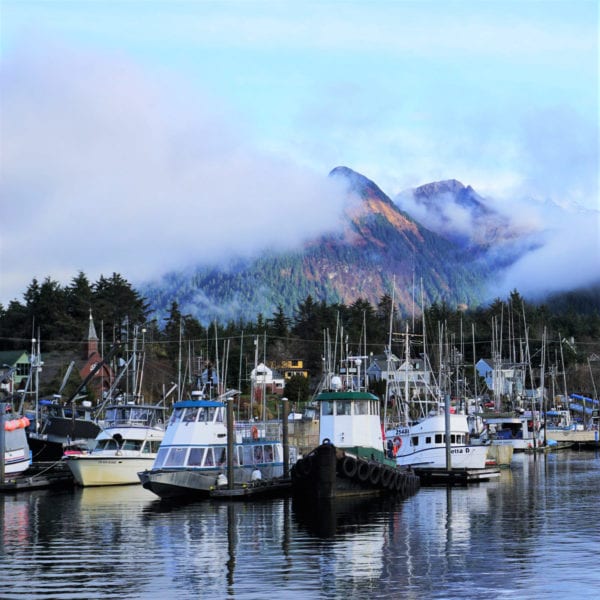
The view from Crescent Harbor
-
Locally Owned Downtown
No matter what town or city you’re traveling to, there are certain things you can expect: outlet malls, familiar big-box retailers, and your favorite fast-food chains. Even on a trip across the country, you’ll find yourself in environments so recognizable, you may as well be at home.
In Sitka, you may see one or two familiar storefronts, but our downtown is almost entirely locally owned. By shopping here, you’re supporting Sitkan business owners, makers, and artists. You’ll have experiences you can’t find in other places, like sitting at the booth of an old-fashioned soda fountain or buying hand-crafted soaps and herbal salves from the family who made them.
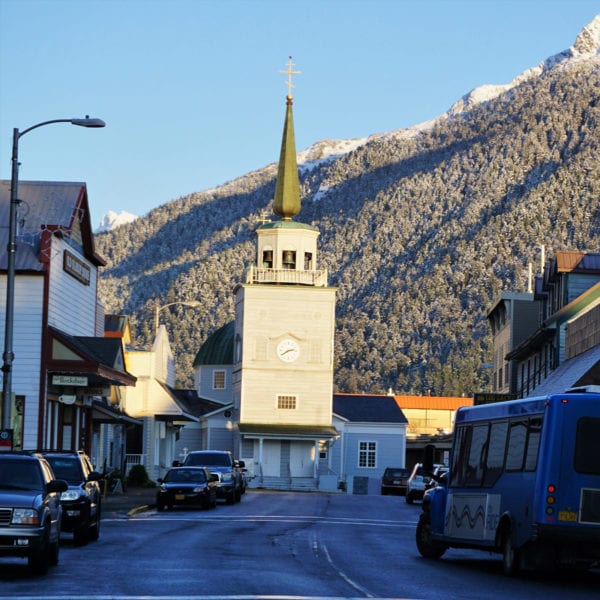
St. Michael’s Cathedral from downtown
-
A Tight-Knit Community
Sitka may be a small town, but the community here is tight-knit and engaged. During the summer, you can catch fun traditions like the Running of the Boots, a fun run where all the participants wear Xtratuf boots and colorful costumes, or the Seafood Festival, when locals race across the harbor in bobbing fish totes. Keep an eye on the community calendar, where you’ll find everything from live music to drag shows, and even the occasional touring magician!
Once tourist season ends, the community looks inward: winter hobbies are started, SCOBYs and sourdough starters exchanged, and routines are rehearsed for the Stardust Ball and Ramshackle Cabaret.
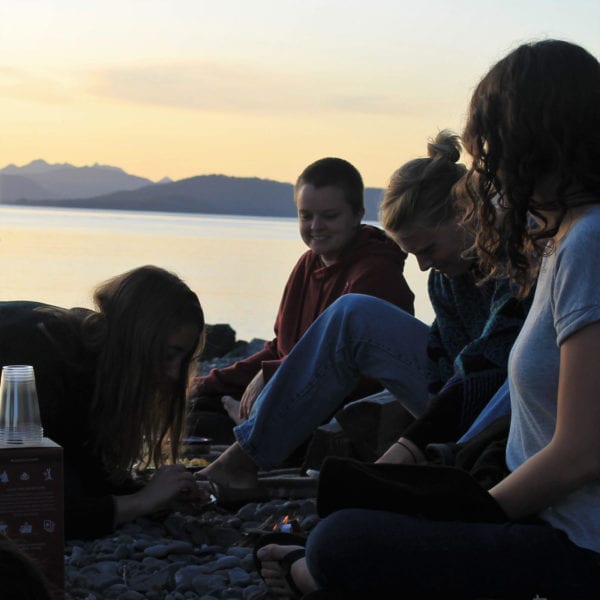
A summer sunset picnic on the beach. Picture by Franklin Eccher.
There are other things too, of course: Sitka is only accessible by plane or boat, and there are just fourteen miles of road along the whole island. The food here is often fresh caught or locally harvested and sometimes when I buy fresh salmon, I am fortunate enough to know the person I’m buying it from. And, even if the rain is pouring, there are people hiking on the trails who inspire me to pull on my boots and do the same. Skin, after all, is waterproof.
